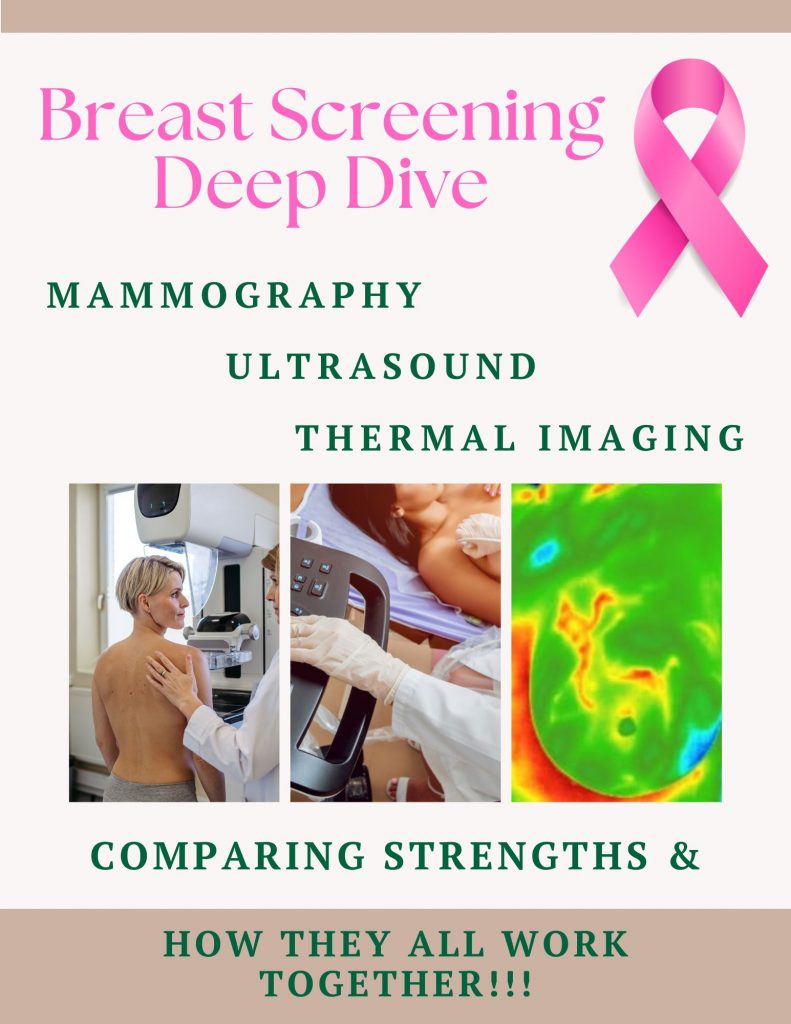
How They Compare and Work Together for Breast Health.
For More Information Call 843-707-7033
Enter to Win a Free Thermal Imaging Breast Health Study! Just Follow our Page, Like & Share this post on social media!
When it comes to breast health, early detection and prevention are key.
With multiple screening options available today — including thermography, ultrasound, and mammography — many women wonder which test is best and whether they can be used together for a more complete picture. Let’s explore how each of these tools works, their unique benefits, and how they can complement each other in a proactive approach to breast wellness.
What Is Thermography?
Thermography (also known as digital infrared thermal imaging) is a non-invasive, radiation-free screening that measures heat and blood flow patterns at the skin’s surface. Because changes in temperature can reflect inflammation, hormonal imbalances, or increased blood vessel activity, thermography can sometimes detect early physiological changes before a structural issue appears on imaging.
Benefits of Thermography
- No radiation or compression — safe and painless.
- Detects early functional changes that may occur before tumors form.
- Useful for younger women or those with dense breast tissue.
- Helpful for monitoring hormonal or inflammatory patterns over time.
What Is Ultrasound?
Breast ultrasound uses sound waves to create images of breast tissue. It’s especially helpful for evaluating areas that appear abnormal on a mammogram or thermogram and for distinguishing between solid masses and fluid-filled cysts.
Benefits of Ultrasound
- No radiation exposure.
- Excellent for dense breast tissue, where mammograms may be less clear.
- Can help guide biopsies or pinpoint the nature of a lump.
- Often used as a follow-up tool for additional clarity.
What Is Mammography?
Mammography is an X-ray imaging technique that visualizes the internal structure of breast tissue and is the current standard screening tool for breast cancer detection. It can identify microcalcifications and structural changes that may indicate cancer at an early stage.
Benefits of Mammography
- Detects small structural changes that may indicate early cancer.
- Widely available and often covered by insurance.
- Considered the primary screening test in conventional medicine.
How They Work Together
Each test offers a unique piece of the puzzle:
- Thermography shows early functional changes — like inflammation or increased heat patterns.
- Ultrasound reveals tissue characteristics and helps clarify findings.
- Mammography detects structural changes within the breast.
When combined, these three tools create a comprehensive breast health strategy — identifying both early physiological shifts and structural changes, which can help guide preventive care or timely intervention.
For example, a thermogram may detect unusual heat activity before a mammogram shows visible change, prompting an ultrasound for further insight. Together, they support a more personalized and proactive approach to women’s health.
Choosing the Right Option for You
Your best screening approach depends on your age, breast density, health history, and risk factors. Many integrative practitioners recommend annual thermography combined with periodic ultrasound and mammography for a well-rounded view of breast wellness — especially for women looking to minimize radiation exposure while still maintaining thorough monitoring.
Key Takeaway
Each breast screening tool has its strengths:
- Thermography detects early changes in physiology.
- Ultrasound provides clarity and confirmation.
- Mammography reveals structural detail.
